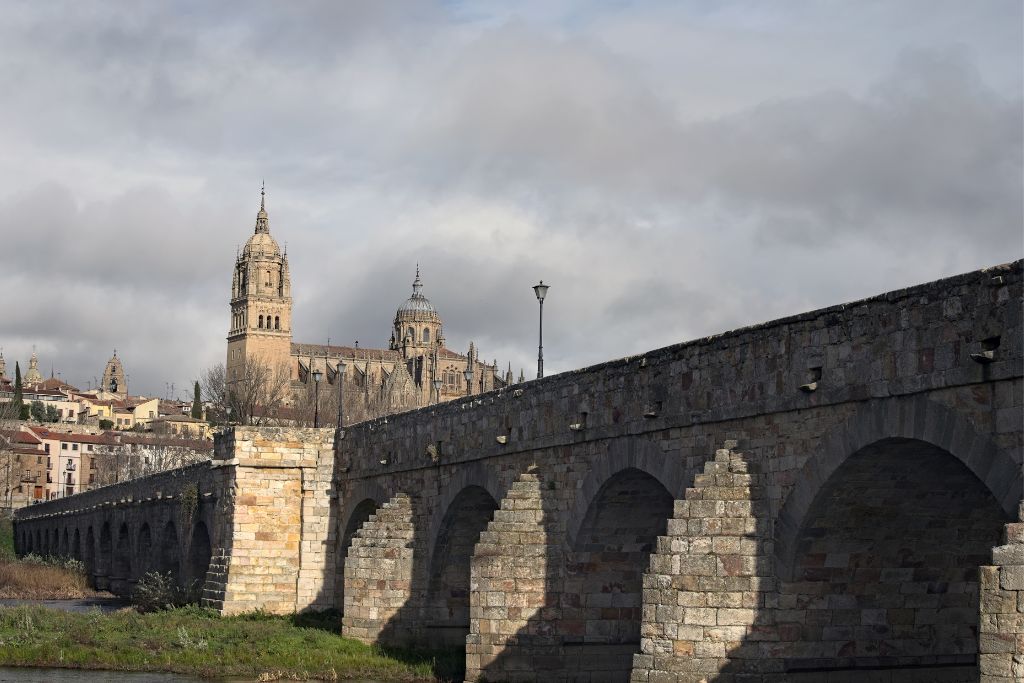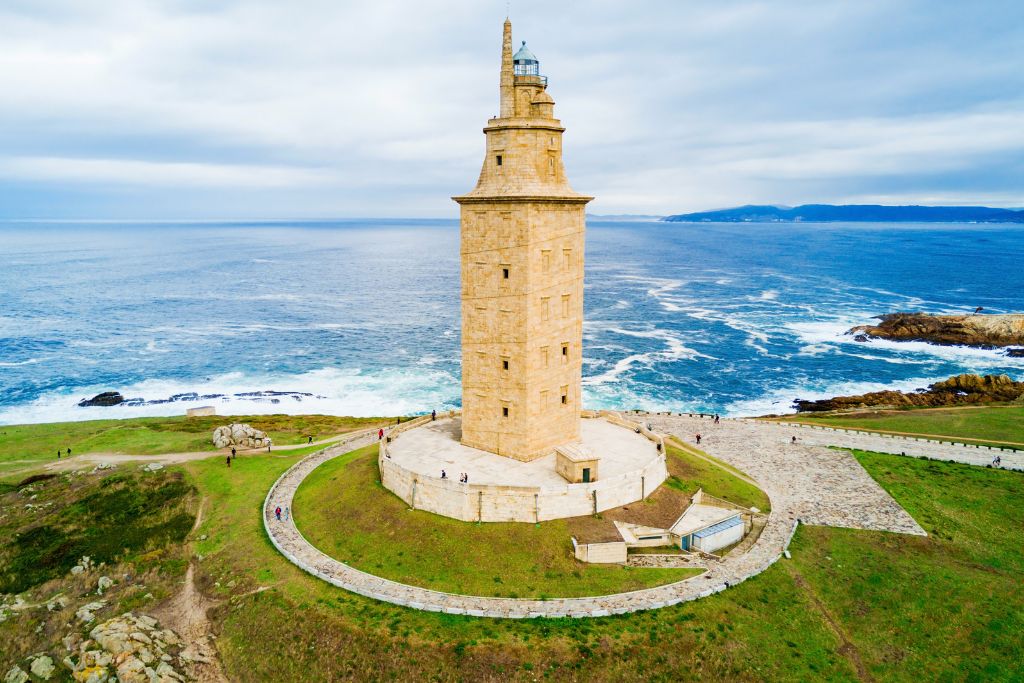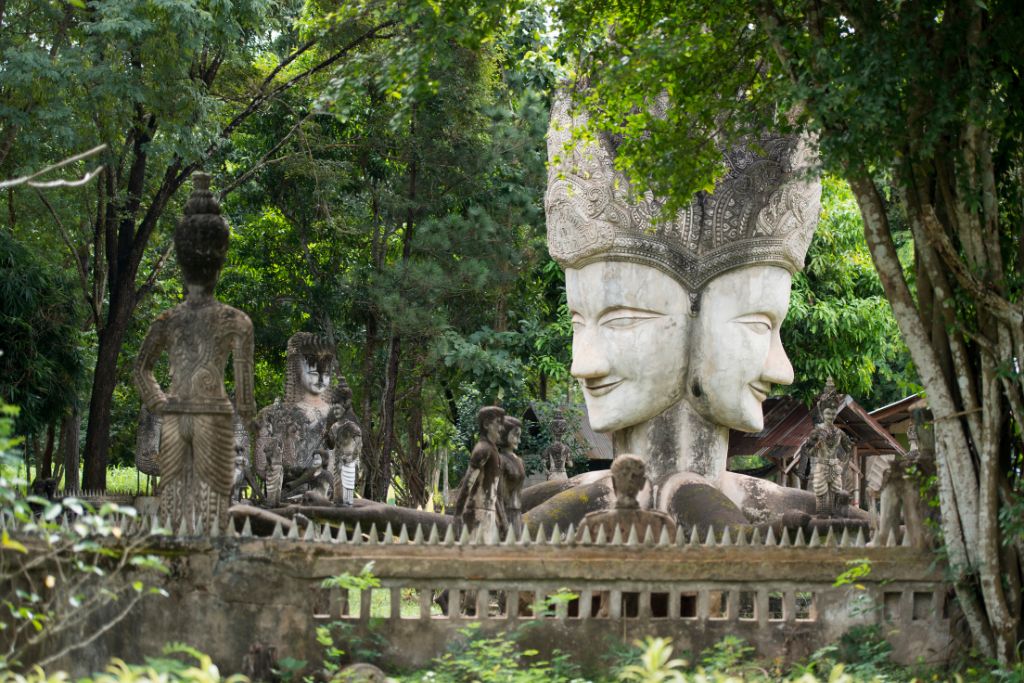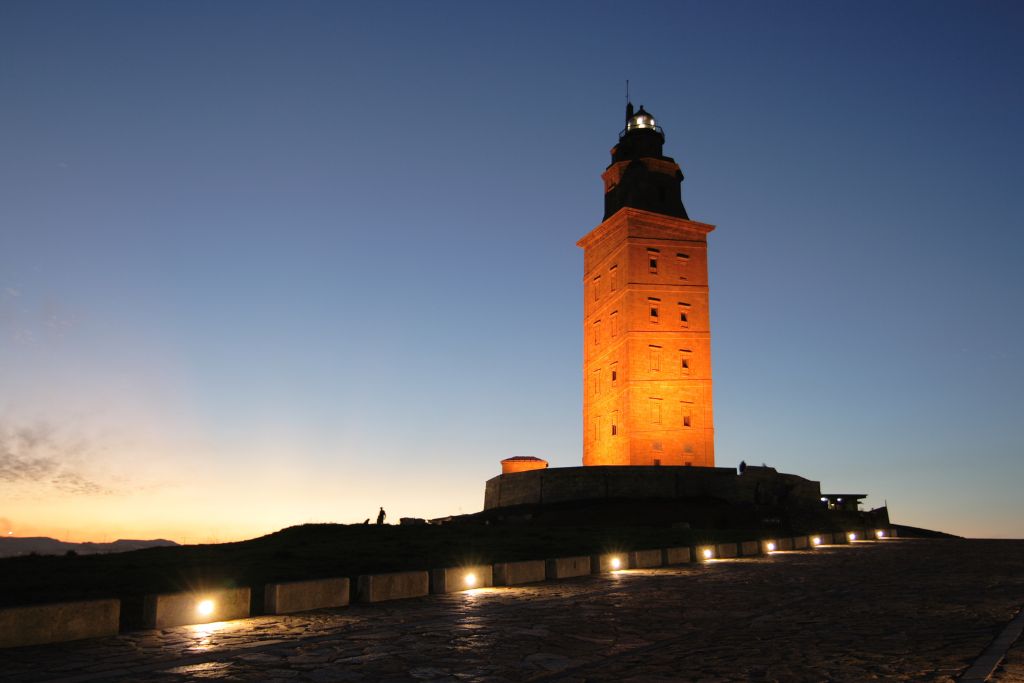A lighthouse known as the Tower of Hercules can be found on an elevated promontory with a vantage point over the Atlantic Ocean. It was inhabited during the time of the Romans and is now recognized as a UNESCO World Heritage Site. It has undergone numerous restorations, and the sections that are the most ancient have been carefully preserved. Visitors are welcome to stop by anytime between ten in the morning and six in the evening. In addition to it, there is a sculpture park located all around the tower.
Built by the Romans
The Tower of Hercules is one of the most important monuments of the city of A Coruna. It is an impressive lighthouse that sits on a hill overlooking the city. It was built in the first half of the 1st century or the beginning of the 2nd century A.D. by the Romans as a signal at the end of their empire, or finis terrae.
It became a UNESCO World Heritage Site in 2009. The structure is the second-tallest lighthouse in Spain.

The tower is composed of three floors, each of which is articulated inside by four vaulted chambers. It is topped by a dome. The tower’s exterior is covered by granite ashlars, and its interior has been rebuilt in a neoclassical style. The neoclassical interior was designed by Eustaqui Giannini, who covered the tower with a neoclassical façade and created an internal staircase to communicate the floors. The tower is also adorned with decorative wallpaper.
Restoration in 1788
The Tower of Hercules is a unique monument in the world because it represents the only surviving Roman lighthouse that has been restored to its original function. It also provides evidence of the continuity of navigation aids over a vast stretch of time. It is, therefore, a benchmark through which the evolution of the different signaling and navigation systems can be studied from antiquity to our own times.
It is believed that the Tower of Hercules was built in the first century AD to guide ships on the western seaboard of the Roman Empire. Based on inscriptions at its base, it was designed by the Roman engineer Gaius Sevius Lupus.

By the 17th century, it had fallen into disrepair. However, in 1788, the tower was restored under the rule of Charles III. The wooden staircase was replaced with a stone one and the walls were faced. The internal walls were made of banded masonry (opus vittatum). They consisted of granite ashlars that were placed in layers of lime and sand.
Sculpture park
The oldest working lighthouse in the world sits up high on a peninsula about 2.4km from the center of A Coruna. It was built by the Romans in the first century AD and is now a UNESCO World Heritage Site. It is also the second-tallest lighthouse in the country.
The Tower of Hercules has a fascinating history. It is believed that Hercules buried the head of his slain enemy here after defeating a giant tyrant. The lighthouse marks the spot and guides mariners with its inextinguishable fire. A skull and crossbones, representing the buried monster, appear on the city’s flag.

The area around the tower is a sculpture park featuring fifteen works by various artists. The sculptures range from mythological stories about Hercules to depictions of the marine vocation of the Galician people. The Sculpture Park is open all year round. It can be easily reached by taxi or bus from the city centre.
History
The Tower of Hercules is one of the most ancient lighthouses in the world. It has been a UNESCO World Heritage Site since 2009. It is located in the city of A Coruna in Galicia, Spain. It has been in existence for over 1900 years. It is a magnificent structure that sits high on an elevated headland. The oldest sections of the lighthouse date back to Roman times.
The tower is 59 meters tall and is divided into three floors. The outside of the tower was restored in the 18th century. During this restoration, the architect Eustaqui Giannini covered the Roman masonry with granite ashlars. He also added an interior staircase that connected the floors.

According to legend, Hercules defeated the giant Geryon in this location after a three-day battle. He then buried his enemy’s head here. This became a symbol of the city and became the emblem on the city’s coat of arms. The area around the tower also features a sculpture park. The sculptural works in this space relate to three different themes. These include mythological stories about Hercules, the Celtic king Breogan, and references to the marine world.
The historical excursion described “Exploring the Wonders of Roman Herculaneum” is fascinating. We look at Herculaneum’s Roman culture and archaeological finds. Discover the majestic architecture and storied background of this well-known monument, a sign of power and direction. These articles introduce you to historical marvels that have awed people for millennia and still do now.